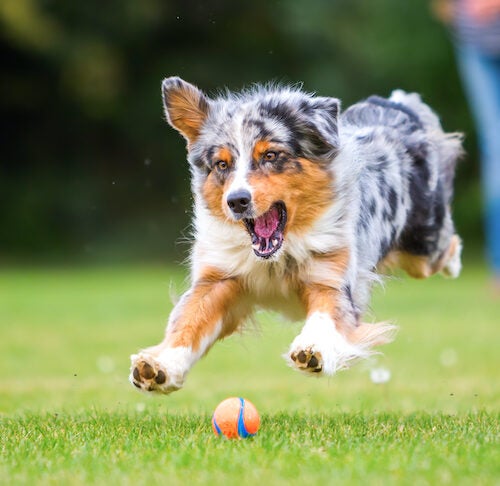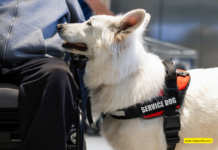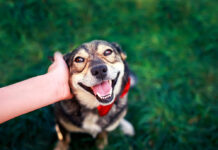Last Updated on May 24, 2024 by Dogs Vets
Introduction to Pet Care
As a pet owner, it is my responsibility to provide proper care and attention to my furry friend. Proper pet care is essential for their overall well-being and happiness. In this section, we will explore the importance of proper pet care and how it helps in building a strong bond with our pets.
The Importance of Proper Pet Care
Proper pet care is crucial for the health and happiness of our beloved companions. It ensures that they receive the necessary nutrition, exercise, grooming, and medical attention they need to thrive. By providing proper care, we can prevent illnesses, manage their behavior, and extend their lifespan.
Pet care encompasses various aspects, including nutrition, exercise, grooming, hygiene, and regular veterinary check-ups. Each of these elements plays a vital role in maintaining the overall health and well-being of our pets. By understanding and fulfilling their needs, we can help them lead a fulfilling and contented life.
Building a Strong Bond with Your Pet
Proper pet care goes beyond meeting their physical needs. It is also about forging a deep and meaningful bond with our pets. Building a strong bond is a two-way street that requires time, patience, and love. When we invest in our pets’ well-being, they reciprocate with loyalty, affection, and companionship.
To build a strong bond with our pets, it is important to spend quality time together. Engage in activities that they enjoy, such as playtime, walks, or simply cuddling. This not only strengthens the bond but also provides mental stimulation and enrichment for our pets.
Communication is another vital aspect of building a strong bond with our pets. Understanding their body language and vocal cues allows us to respond to their needs and emotions effectively. By listening and responding to our pets, we establish trust and a deeper level of understanding.
By prioritizing proper pet care and actively working on building a strong bond, we create a loving and nurturing environment for our pets. This not only enhances their well-being but also enriches our own lives with the joy and companionship they bring.
Remember, pet care is a lifelong commitment. It requires continuous learning and adaptation to the changing needs of our pets. By seeking advice and staying informed about the best practices in pet care, we can ensure that our beloved companions receive the love, care, and attention they deserve.
For more pet care advice and tips, check out our articles on pet care services, pet care for rabbits, pet care tips, and pet care products.

Nutrition and Feeding
Proper nutrition is vital for the overall health and well-being of our pets. As responsible pet owners, it is our duty to provide them with a balanced diet that meets their specific dietary needs. In this section, I will discuss the importance of providing a balanced diet and understanding the dietary needs of different pets.
Providing a Balanced Diet
Just like humans, pets require a balanced diet to thrive. A balanced diet consists of the right combination of proteins, carbohydrates, fats, vitamins, and minerals. These nutrients play a crucial role in supporting your pet’s growth, energy levels, and overall health.
When it comes to feeding your pet, it’s important to choose high-quality pet food that is appropriate for their species, age, and size. Look for pet food that has been formulated to meet the nutritional standards set by reputable organizations. Reading the labels and understanding the ingredients can help you make an informed decision about what to feed your furry friend.
It’s also essential to consider portion control and avoid overfeeding. Obesity in pets can lead to various health issues, including joint problems, heart disease, and diabetes. Follow the feeding guidelines provided by the pet food manufacturer and consult your veterinarian for personalized feeding recommendations based on your pet’s specific needs.
Understanding Dietary Needs of Different Pets
Different pets have different dietary needs. Here are some general guidelines to consider for popular pets:
| Pet | Dietary Needs |
|---|---|
| Dogs | Dogs are omnivores and require a balanced diet consisting of high-quality protein, carbohydrates, fats, vitamins, and minerals. Consider their age, size, and activity level when selecting the appropriate dog food. For more specific information, check out our article on pet care for dogs. |
| Cats | Cats are obligate carnivores and require a diet rich in animal-based protein. They also need certain amino acids, such as taurine, which are essential for their well-being. Consult with your veterinarian to choose a cat food that meets their unique nutritional requirements. For more information, refer to our article on pet care for cats. |
| Rabbits | Rabbits are herbivores and need a diet primarily consisting of high-quality hay, fresh vegetables, and a small amount of pellets. They have specific dietary requirements, so it’s important to educate yourself on proper rabbit nutrition. Check out our article on pet care for rabbits for detailed guidance. |
Remember, consulting with a veterinarian is crucial to ensure that you are meeting your pet’s specific dietary needs. They can provide tailored recommendations based on factors such as age, breed, health conditions, and any special dietary considerations.
By providing a balanced diet and understanding the dietary needs of your pet, you are taking a significant step towards their overall health and happiness. A well-nourished pet is more likely to have a strong immune system, healthy skin and coat, and improved longevity. For more pet care advice, explore our articles on pet care tips and pet care products.

Exercise and Mental Stimulation
Ensuring that your pet gets regular exercise and mental stimulation is essential for their overall well-being. Exercise not only helps maintain a healthy weight but also strengthens their muscles and joints.
Additionally, providing mental stimulation helps keep your pet’s mind sharp and can prevent boredom and destructive behaviors. Let’s explore the importance of regular exercise and engaging activities for mental stimulation.
Importance of Regular Exercise
Regular exercise is crucial for pets of all ages and breeds. It not only helps them burn off excess energy but also promotes cardiovascular health and strengthens their immune system. Exercise is especially important for dogs, as it helps prevent obesity, which can lead to various health problems.
The type and amount of exercise your pet needs will depend on their age, breed, and overall health. For example, high-energy dog breeds may require more vigorous exercise, such as running or playing fetch, while smaller dog breeds may be content with shorter walks or indoor play sessions.
Cats, on the other hand, benefit from interactive play sessions that mimic hunting behaviors.
To ensure your pet gets enough exercise, establish a routine that includes daily walks, playtime, or interactive toys. This not only keeps them physically fit but also provides an opportunity for bonding and socialization.
If you have a busy schedule, you may consider hiring pet care services or enlisting the help of a professional dog walker to ensure your pet’s exercise needs are met.
Engaging Activities for Mental Stimulation
In addition to physical exercise, mental stimulation is crucial for your pet’s overall well-being. Mental enrichment activities help prevent boredom and can even reduce anxiety and destructive behaviors.
Here are some engaging activities that can provide mental stimulation for your pet:
Puzzle Toys and Treat Dispensers
Puzzle toys and treat dispensers are excellent options for mental stimulation, especially for dogs. These toys require your pet to solve a puzzle or manipulate the toy to access treats or food. They challenge their problem-solving skills and keep them mentally engaged.
Look for puzzle toys that are appropriate for your pet’s size and difficulty level.
Training Sessions
Training sessions not only teach your pet valuable skills but also provide mental stimulation. Dogs, in particular, thrive on learning and performing tasks. Regular training sessions not only reinforce obedience but also keep their minds active and engaged. Incorporate positive reinforcement techniques to make the training sessions enjoyable for both you and your pet.
Interactive Play and Hide-and-Seek
Interactive play sessions using toys, feathers, or laser pointers can stimulate your cat’s hunting instincts and provide mental stimulation. Engage them in playtime regularly to keep their minds active and prevent boredom. For dogs, hide-and-seek games with treats or toys can provide mental stimulation while also reinforcing obedience commands.
By incorporating regular exercise and engaging activities for mental stimulation into your pet’s routine, you can ensure they lead a happy and balanced life. Remember to tailor the activities to your pet’s specific needs, and always provide supervision to ensure their safety. For more pet care tips, check out our article on pet care tips.

Grooming and Hygiene
Proper grooming and hygiene practices play a vital role in the overall well-being of your pet. Regular grooming not only keeps your furry friend looking their best but also contributes to their health and happiness. In this section, we will explore the importance of regular grooming practices and how to maintain your pet’s hygiene effectively.
Regular Grooming Practices
Grooming your pet regularly is essential for their physical health and appearance. It helps to keep their coat clean, free from tangles and mats, and reduces the risk of skin irritations. The frequency of grooming depends on the type of pet and their specific needs. Here are some general grooming practices to consider:
- Brushing: Regular brushing removes loose hair, prevents matting, and stimulates the skin’s natural oils. Different pets require different types of brushes, so make sure to choose one that suits your pet’s coat. Refer to our article on pet care for rabbits for specific grooming tips for rabbits.
- Bathing: Bathing your pet helps to keep their coat and skin clean. It is important to use pet-specific shampoos and follow the recommended bathing frequency for your pet’s breed. Avoid over-bathing as it can strip the natural oils from their coat, leading to dryness and irritation.
- Nail Trimming: Regular nail trims prevent overgrowth, discomfort, and potential injuries. Use pet nail clippers designed for your pet’s size and be cautious not to cut too close to the quick, which can cause bleeding. If you’re unsure about nail trimming, consider seeking assistance from a professional groomer or veterinarian.
- Ear Cleaning: Cleaning your pet’s ears regularly helps prevent ear infections and the buildup of wax and debris. Use a pet-safe ear cleaning solution and gently wipe the outer part of the ear with a cotton ball or a soft cloth. Avoid inserting anything into the ear canal.
- Dental Care: Dental hygiene is crucial for your pet’s overall health. Regularly brush your pet’s teeth using a pet-specific toothbrush and toothpaste. Additionally, provide dental chews and toys that promote oral health.
Maintaining Your Pet’s Hygiene
Apart from regular grooming practices, maintaining your pet’s hygiene involves a few additional steps to keep them clean and comfortable:
- Regularly clean their bedding: Wash your pet’s bedding regularly to prevent the buildup of dirt, hair, and bacteria. Follow the manufacturer’s instructions for proper washing and drying techniques.
- Cleaning their living area: Keep your pet’s living area clean by regularly removing any waste, sanitizing food and water bowls, and providing fresh water daily.
- Flea and tick prevention: Use appropriate flea and tick prevention products recommended by your veterinarian to protect your pet from these common pests.
- Regular veterinary check-ups: Regular visits to the veterinarian are crucial to ensure your pet’s overall health and hygiene. The veterinarian can provide guidance on specific grooming practices, dental care, and check for any underlying health issues.
Remember, each pet has unique grooming and hygiene needs, so it’s important to tailor your approach based on their breed, age, and specific requirements. By incorporating regular grooming practices and maintaining good hygiene, you can help ensure that your pet stays healthy, happy, and comfortable.
For more pet care tips and advice, check out our article on pet care tips.

Health and Wellness
Ensuring the health and wellness of your beloved pet is a top priority as a responsible pet owner. Regular veterinary check-ups and being able to recognize signs of illness are key elements in providing proper care for your furry friend.
Regular Vet Check-Ups
Regular visits to the veterinarian are essential for maintaining your pet’s overall health and well-being. During these check-ups, the veterinarian will perform a thorough examination, administer any necessary vaccinations, and address any concerns or questions you may have.
These routine visits allow for early detection of any potential health issues and can help prevent more serious problems down the line.
The frequency of vet check-ups may vary depending on the age, species, and specific needs of your pet. Puppies and kittens typically require more frequent visits to ensure they receive the necessary vaccinations and to monitor their growth and development.
Adult pets may benefit from annual check-ups, while senior pets or those with ongoing medical conditions may require more frequent visits. It is important to follow the recommended schedule provided by your veterinarian to ensure your pet receives the appropriate care.
Recognizing Signs of Illness
Being able to recognize signs of illness in your pet is crucial in maintaining their health. While each pet may exhibit different symptoms, there are some common signs that may indicate a potential health issue.
These include:
- Changes in appetite or water intake
- Weight loss or gain
- Lethargy or decreased activity levels
- Changes in behavior or temperament
- Difficulty breathing or coughing
- Vomiting or diarrhea
- Skin issues or changes in coat appearance
- Increased urination or difficulty urinating
If you notice any of these signs or any other unusual behaviors in your pet, it is important to consult with your veterinarian promptly. Early detection and treatment of illnesses can greatly improve the prognosis and quality of life for your pet.
By prioritizing regular vet check-ups and staying vigilant in recognizing signs of illness, you can proactively care for your pet’s health and wellness. Remember, the health and well-being of your pet are dependent on your commitment to their care. For more pet care tips and advice, explore our articles on pet care services, pet care for rabbits, pet care tips, and pet care products.

Love and Companionship
As pet owners, creating a loving environment and building a strong bond with our pets is essential for their happiness and well-being. Love and companionship play a vital role in ensuring that our furry friends live fulfilling lives. In this section, we will explore two key aspects of love and companionship: creating a loving environment and building trust and communication with your pet.
Creating a Loving Environment
Creating a loving environment for your pet sets the foundation for a happy and healthy relationship. Here are some tips to foster a loving atmosphere:
- Provide a Safe Space: Ensure that your pet has a comfortable and safe space of their own where they can retreat when they need some downtime. This could be a cozy bed, a crate, or a designated area in your home.
- Spending Quality Time: Dedicate regular quality time to bond with your pet. Engage in activities that they enjoy, such as playing with their favorite toys, going for walks, or simply cuddling on the couch. This time together strengthens the emotional connection between you and your pet.
- Positive Reinforcement: Use positive reinforcement techniques, such as treats, praise, and rewards, to encourage good behavior. This helps your pet associate your presence with positive experiences and reinforces the bond between you.
- Respect Their Boundaries: Just like humans, pets have their own preferences and boundaries. Respect their personal space and be attentive to their body language. This helps build trust and ensures that they feel comfortable in your presence.
Building Trust and Communication with Your Pet
Building trust and effective communication is crucial for a strong bond with your pet. Here are some strategies to establish trust and enhance communication:
- Consistency and Routine: Establish a consistent routine for feeding, exercise, and playtime. This routine helps your pet feel secure and builds trust as they know what to expect from you.
- Positive Association: Create positive associations with common activities or experiences that may be initially stressful for your pet. For example, pair nail trimming sessions with treats or rewards to help your pet associate it with positive experiences.
- Observe and Understand: Pay attention to your pet’s body language, vocalizations, and behaviors. This allows you to better understand their needs and emotions. By being observant, you can respond appropriately and address any concerns promptly.
- Training and Obedience: Training your pet using positive reinforcement techniques not only helps establish boundaries but also enhances communication. Basic commands like “sit,” “stay,” and “come” create a common language between you and your pet.
- Patience and Empathy: Remember to be patient with your pet as they learn and grow. Show empathy towards their needs and emotions. This understanding helps strengthen the bond and builds trust over time.
By creating a loving environment and building trust and communication with your pet, you establish a strong foundation for a happy and fulfilling relationship. Remember to be consistent, patient, and attentive to your pet’s needs. With time and effort, your bond with your pet will deepen, resulting in a loving and enriching companionship. For more pet care advice, explore our pet care tips section.

















